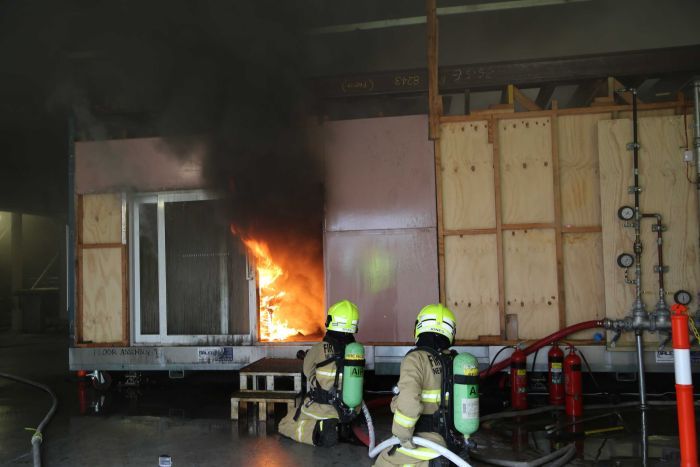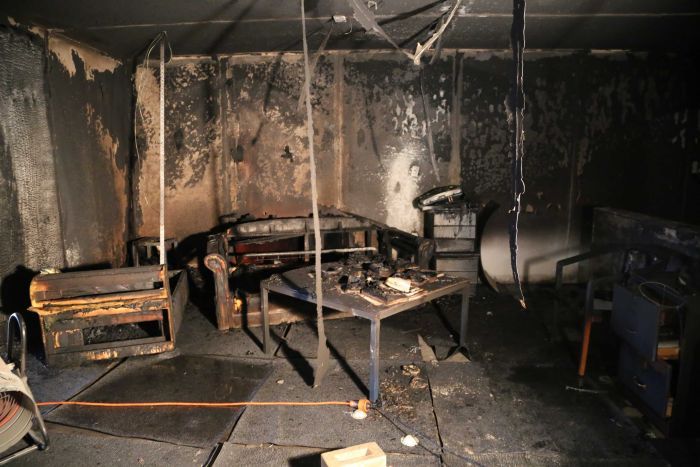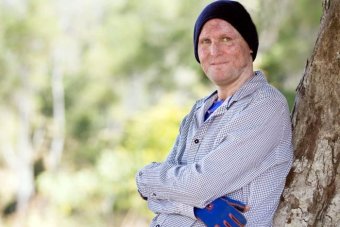NSW Fire and Rescue say research settles smoke
alarm safety debate, critics disagree
RN By Annie Guest
Updated 22 Jan 2018, 4:07pm

Photo A mock two bedroom apartment was set alight 81 times to test four types of smoke alarms (Supplied: Fire and Rescue NSW)
Many of us feel safer knowing we've got smoke alarms installed in our homes, but how many people are aware of a raging — and disquieting — debate over their efficacy
One alarm is so maligned it's banned in some jurisdictions, but elsewhere it is in common use.
Fire authorities in New South Wales have now released research they say provides the evidence to settle the argument involving the two most common smoke alarms — ionization and photoelectric.
But critics — including a respected expert — are not satisfied, calling the research flawed and dangerous.
__________________________________
Key points:
- Experiment involved burning a mock two
bedroom apartment 81 times
- Photoelectric, ionization, combination alarms
tested
- Differences of 30 seconds to 53 seconds
on average between alarms for different
types of hazard
_____________________________________
Two-bed apartment set alight 81 times
The three-year study by Fire and Rescue New South Wales (FRNSW) tested the response times of four different types of smoke alarms: photoelectric (they can be faster at detecting smoldering fires), ionization (they can be faster at detecting flaming fires), dual photoelectric and ionization, and dual photoelectric and heat sensing alarms.
"So we used real furniture in a mock up of a two-bedroom apartment and set fire to it, 81 times: 27 different types of scenario with different types of ignition, different types of fire, slow smoldering fires, fast flaming fires, nuisance alarm tests," Assistant Commissioner of FRNSW Mark Whybro said.
AUDIO Do Smoke Alars Save Lives? (Breakfast)
The report, Smoke Alarms in Homes: Stage 2, found that in smoldering fire tests the photoelectric alarms, photoelectric and ionization dual alarms and photoelectric with heat sensing alarms activated on average 30 seconds to a minute faster than ionization alarms.
In flaming tests, ionization alarms activated on average up to 53 seconds faster than the rest.
It also found there were false alarms from ionization and dual detectors, and also photoelectric and multi-criteria alarms not going off.
"There were noticeable differences in the four different alarm types that we tested. Some reacted better in certain circumstances, whereas others were more favourable but produced a better performance in others," Assistant Commissioner Whybro said.
"Once again, our research shows that no particular smoke alarm reacts the best in all situations.
"So what we're saying is it's actually the number, the location and the interconnection of smoke alarms that gives you the best possible chance."

Photo The report tested four types of alarms (Supplied: Fire and Rescue NSW)
Experts criticise experiment
But independent fire expert David Isaac told RN Breakfast it was not a proper smoldering fire test because cotton was also involved.
"I think they've got some very smart people in the fire research but I think there's a lack of expertise in understanding the absolute technical issues involved and the characterisation studies of smoke," he said.
Photoelectric alarms have gone off 30 minutes before ionization alarms in previous studies, according to Mr Isaac, who is a member of Standards Australia fire committees and also the Fire Protection Association's Technical Advisory Committee.
"Once the fire goes to the flaming stage in a home, it's less than three minutes, so you won't be able to survive in that home. So, you don't want to know about a fire when it's flaming," Mr Isaac said.
"You must know about a fire when it's early in its smoldering phase and that's what ionization smoke alarms will not do, unless it's in the room of the fire origin and the fire develops substantially with heat."
Assistant Commissioner fires back
But Assistant Commissioner Whybro said the research was realistic.
"David is entitled to his opinion, he's a well-respected expert in this industry. The source of ignition has been used in other fire research projects across the world," he said.
"I'm more than happy to talk to David about further research, and how to build on what we know now."
Mr Isaac says he has seen CSIRO research where ionization alarms failed a previous standard, but the manufacturers that commissioned it will not publish the results.

Photo Assistant Commissioner Mark Whybro defendedthe research Supplied: Linkedin
He and others have argued for years that the Building Code should be changed.
"There are times when the ionization alarm is a particularly dangerous device and we've seen this in the US with litigation and court cases where they're always settled out of court under confidentiality orders by the manufacturers."
Neither the CSIRO nor smoke alarm manufacturers agreed to interviews.
Accusations ionization alarms useless
There have been years of accusations ionization alarms are next to useless at saving lives.
- They're banned in some jurisdictions overseas and in
Queensland and the Northern Territory, where
Photoelectric alarms are compulsory in all homes
- The Australian Building Code mandates photoelectric
alarms in all hospitals and hotels
- Former NSW Fire Commissioner Greg Mullins told a
senate inquiry in 2014 ionization alarms should be
outlawed everywhere, says "people have said that one
alarm technology is good for flaming fires and one is
good for smoldering. In my experience as a firefighter
just about every fire I have ever been to started as a
smoldering fire."

Photo Matt Golinski lost his wife and three daughters when fire engulfed his house (Barry Alsop/Eyes Wide Open Images)
- In 2011, Australia's worst house fire claimed 11 lives in Logan south of Brisbane, where a survivor said false
alarming smoke detectors had been switched off
- Also in 2011, celebrity chef Matt Golinski lost his wife and three children in a blaze where ionization alarms
were connected, according to his father
FRNSW began its smoke alarm tests in 2014, with 10 initial test burns that confirmed ionization alarms were inferior to photoelectric and dual alarms in most scenarios. Those figures have not been released publicly.
Afterwards, the Australian Building Codes Board commissioned a critical review by Victoria University, which found the initial range of scenarios tested was inadequate.
"We took on board all of the constructive criticism we got out of that review, the first review of stage one, and fed that into stage two," Assistant Commissioner Whybro said.
He said the research should put paid to the debate over photoelectric and ionization alarms.
RN Breakfast sought an interview with the former NSW fire commissioner Greg Mullins, but was told Mr Mullins had informed the current commissioner's office he wasn't available for an interview.
The Senate inquiry recommended in 2016 mandatory interconnected, photoelectric smoke alarms, supplemented where appropriate by ionization smoke alarms.
At least part of that is echoed in this study's central message, so that while debate continues there's unanimity at least on this basic point: homes need smoke alarms that signal each other, and they need more of them.
First posted 22 Jan 2018, 5:33am
Extracted, 6 Dec 18, from ABC webpage:
www.abc.net.au/news/2018-01-22/ionization-smoke-alarm-safety-debate-rages-after-nsw-fire-study/9347444

"The world is a dangerous
place to live; not because
of the people who are evil,
but because of the people
who do nothing about it."
Albert Einstein
"Ignorance, allied with..
power, is the most.. ferocious enemy..
justice can have."

James A Baldwin
"The only thing..
necessary for the.. triumph of evil is that..
good men do nothing."

Edmund Burke
